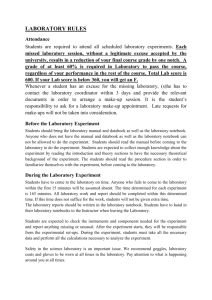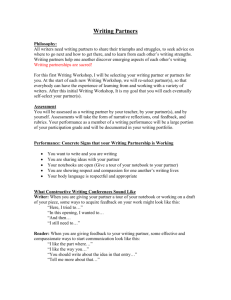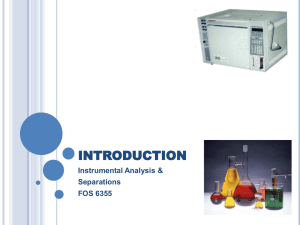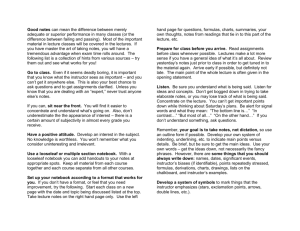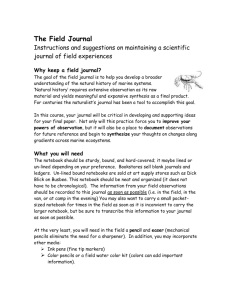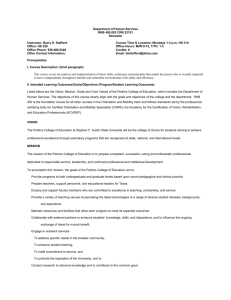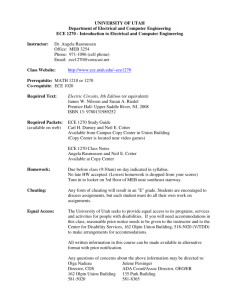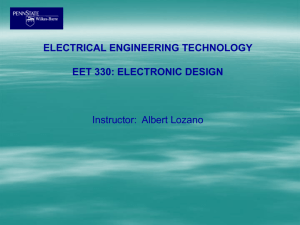EE380Syl
advertisement
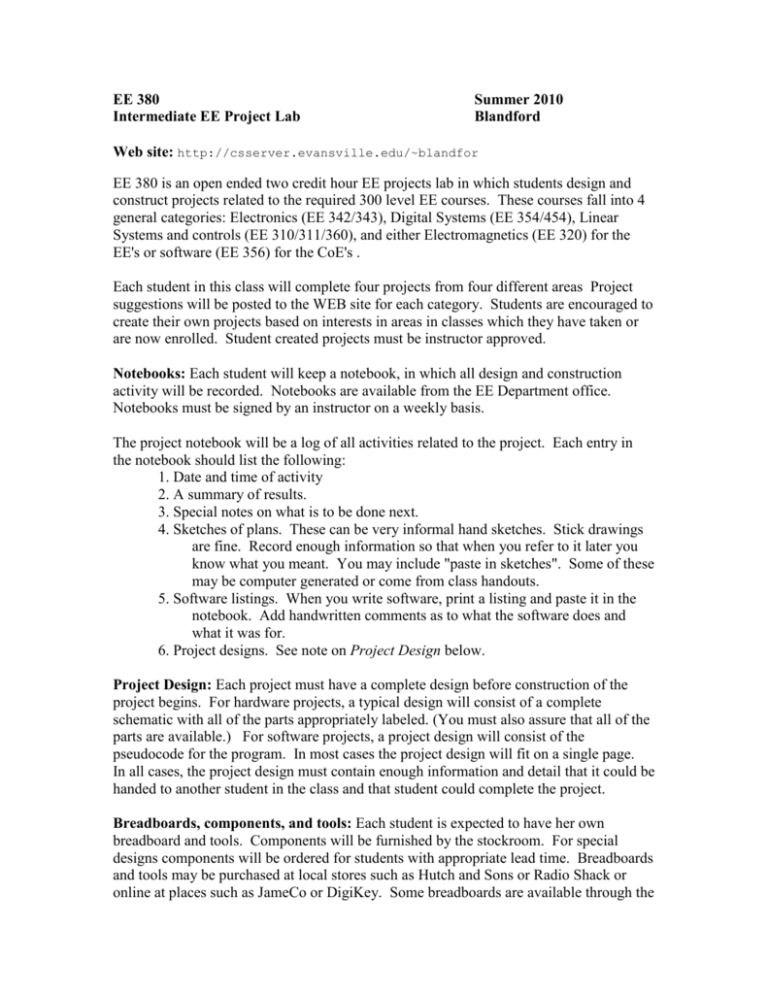
EE 380 Intermediate EE Project Lab Summer 2010 Blandford Web site: http://csserver.evansville.edu/~blandfor EE 380 is an open ended two credit hour EE projects lab in which students design and construct projects related to the required 300 level EE courses. These courses fall into 4 general categories: Electronics (EE 342/343), Digital Systems (EE 354/454), Linear Systems and controls (EE 310/311/360), and either Electromagnetics (EE 320) for the EE's or software (EE 356) for the CoE's . Each student in this class will complete four projects from four different areas Project suggestions will be posted to the WEB site for each category. Students are encouraged to create their own projects based on interests in areas in classes which they have taken or are now enrolled. Student created projects must be instructor approved. Notebooks: Each student will keep a notebook, in which all design and construction activity will be recorded. Notebooks are available from the EE Department office. Notebooks must be signed by an instructor on a weekly basis. The project notebook will be a log of all activities related to the project. Each entry in the notebook should list the following: 1. Date and time of activity 2. A summary of results. 3. Special notes on what is to be done next. 4. Sketches of plans. These can be very informal hand sketches. Stick drawings are fine. Record enough information so that when you refer to it later you know what you meant. You may include "paste in sketches". Some of these may be computer generated or come from class handouts. 5. Software listings. When you write software, print a listing and paste it in the notebook. Add handwritten comments as to what the software does and what it was for. 6. Project designs. See note on Project Design below. Project Design: Each project must have a complete design before construction of the project begins. For hardware projects, a typical design will consist of a complete schematic with all of the parts appropriately labeled. (You must also assure that all of the parts are available.) For software projects, a project design will consist of the pseudocode for the program. In most cases the project design will fit on a single page. In all cases, the project design must contain enough information and detail that it could be handed to another student in the class and that student could complete the project. Breadboards, components, and tools: Each student is expected to have her own breadboard and tools. Components will be furnished by the stockroom. For special designs components will be ordered for students with appropriate lead time. Breadboards and tools may be purchased at local stores such as Hutch and Sons or Radio Shack or online at places such as JameCo or DigiKey. Some breadboards are available through the EE office. A typical breadboard suitable for this class should have 1,500 to 2,500 tie points and 3 or 4 binding post. (JameCo part number 136901 has 1,600 tie points and 4 binding post and is available from WWW.jameco.com for $21.95.) Project Documentation: Some projects are all hardware in nature. Others will be all software and still others will be some mix of hardware and software. For those projects which have a hardware component, the minimum formal documentation will consist of the following: 1. A complete schematic given in sufficient detail that another student in the class could construct the hardware from the schematic. 2. A written description of the design process. This will tell how the design was done. Design equations and references should be given where appropriate. For those project which have a software component, the minimum formal documentation will consist of the following: 1. A complete fully commented listing of the source code. 2. A written description of the algorithms used given in sufficient detail that another student in the class could duplicate the function of the code. The complete formal documentation for each project will consist of a title sheet, the hardware documentation, and the software documentation. The title sheet should have the date the project was turned in, your name, and the project number, title, and area. Grading: Each of the four projects will be counted as 25% of the final grade. Each project will be graded according to the following point allocation: Notebook - 20 pts Formal Design - 20 pts Creativity - 10pts Final working project - 50 pts Total points per project - 100 pts Each project will have a due date and a late date. Projects handed in by the due date will be graded on the scale outlined above. Projects handed in by the late date will be graded on the scale above but 10 points will be deducted. No project will be accepted after the late date. Projects can be done in any order. Due dates for the projects are as follows: Project 1 Project 1 late date Project 2 Project 2 late date Project 3 Project 3 late date Project 4 Project 4 late date May 31 June 7 June 21 June 28 July 7 July 14 July 23 July 23 Lab Procedure: This class has no lecture. Students may obtain a lab pass to work after hours in the project labs. Otherwise, the project labs will be open from 8:00am until 5:00pm. An instructor will be available at least 4 hours per week on a regularly scheduled basis in the lab for assistance. Students who need additional help on projects should make an appointment during regular office hours to see an instructor individually. Project Collaboration: Each student is expected to do her own work on each project. While students are encouraged to discuss projects with each other, all project design and construction must be done on an individual basis. Any student who provides design or construction assistance to another student will be considered to have violated the honor code. Information on construction parts availability, specifications sheets, and reference materials should be shared freely.
